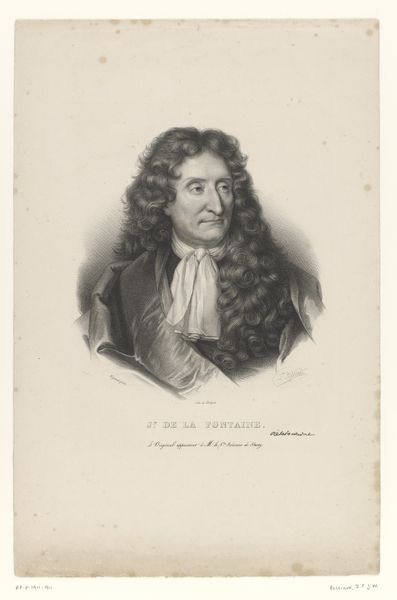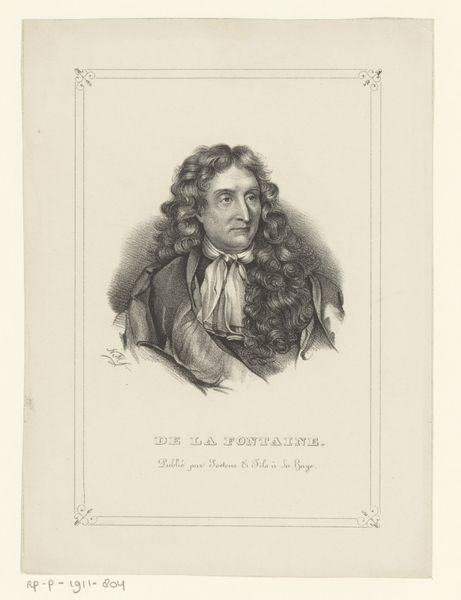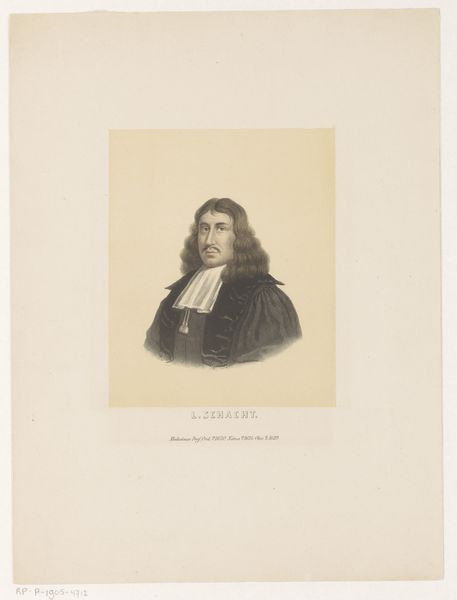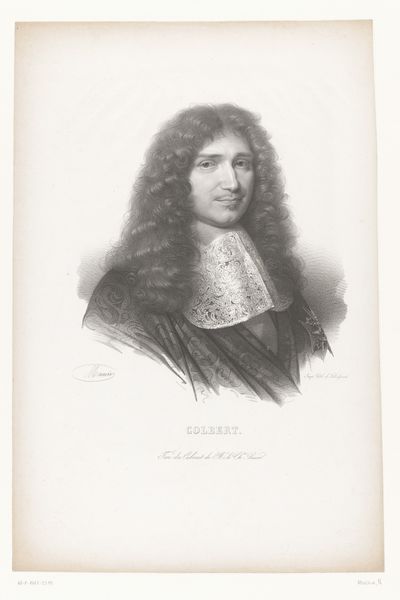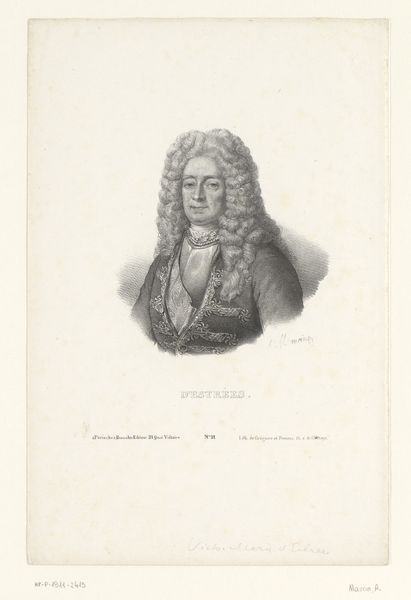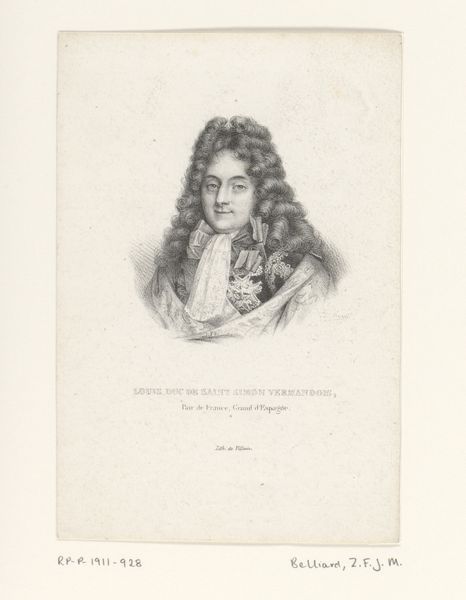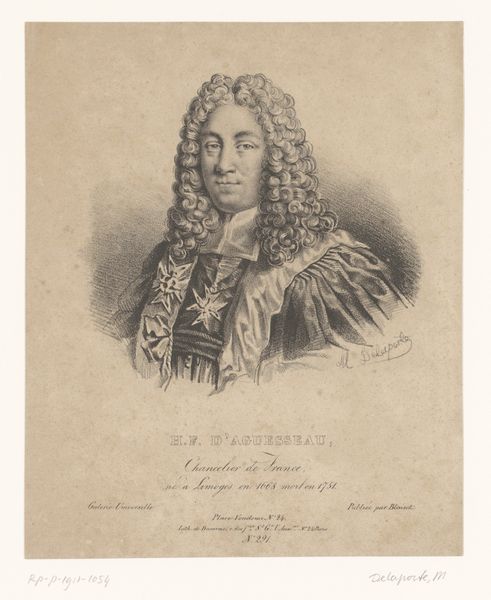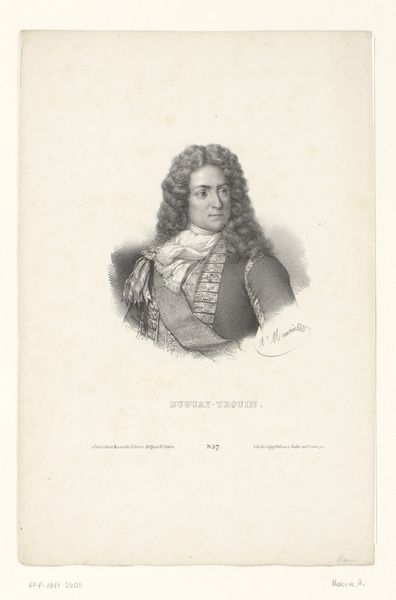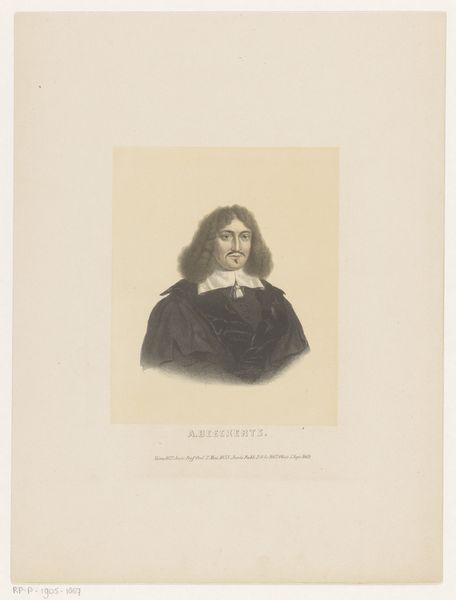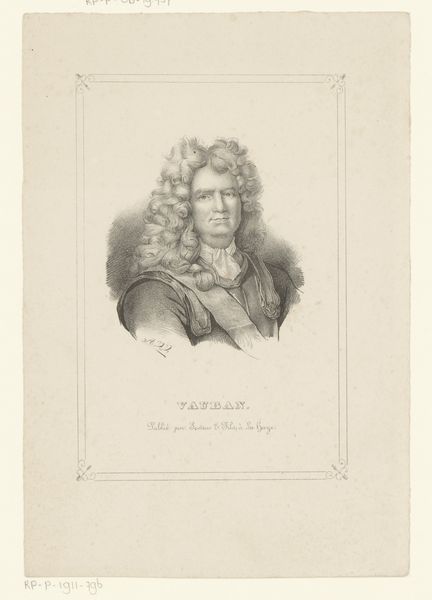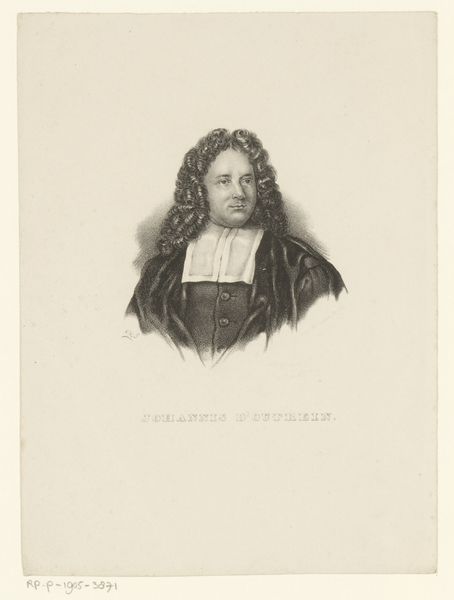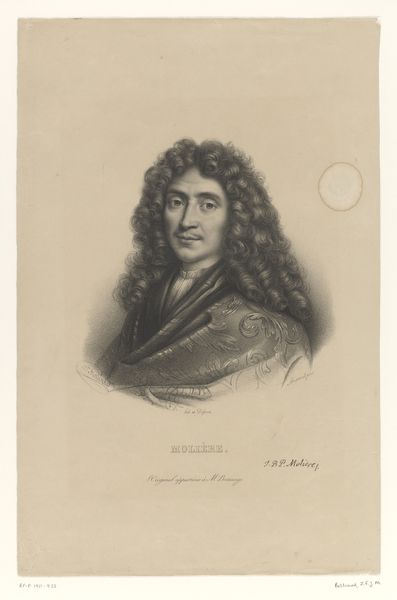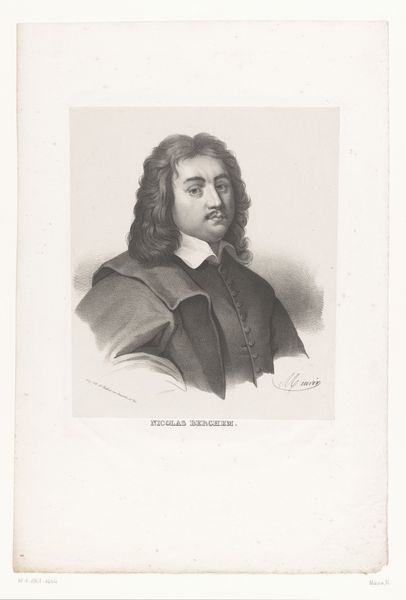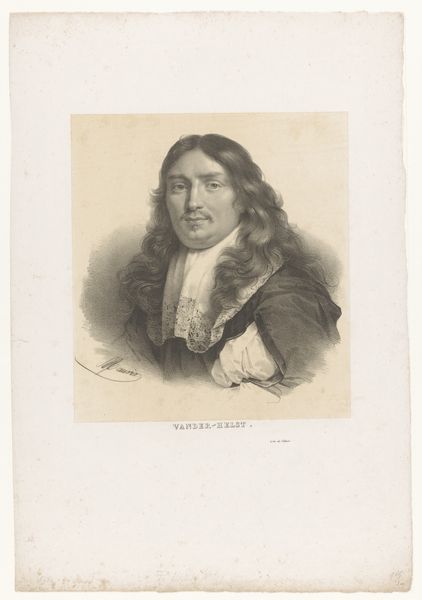
graphite, engraving
#
portrait
#
pencil drawn
#
neoclacissism
#
old engraving style
#
pencil drawing
#
graphite
#
engraving
Dimensions: height 541 mm, width 405 mm
Copyright: Rijks Museum: Open Domain
This is Henri Grevedon's portrait of Jean de La Fontaine, meticulously rendered using lithography – a printmaking process reliant on the precise application of greasy crayon to a stone matrix. The magic of lithography lies in the chemical reaction between grease and water, which allows for the transfer of the image onto paper. Look closely, and you will see the subtle gradations of tone, achieved by layering successive applications of the crayon. The artist skillfully used this process to convey the texture of La Fontaine's voluminous wig, and the soft drape of his cravat. Lithography emerged in the late 18th century, revolutionizing printmaking with its capacity for relatively quick and inexpensive reproduction. Its proliferation was closely tied to the rise of a new, urban, reading public – and of course the industrial revolution that made it possible. In its own way, then, this portrait speaks of the democratization of knowledge and the burgeoning culture of celebrity. Materials, making, and context - each is essential for understanding the full meaning of this artwork.
Comments
No comments
Be the first to comment and join the conversation on the ultimate creative platform.
